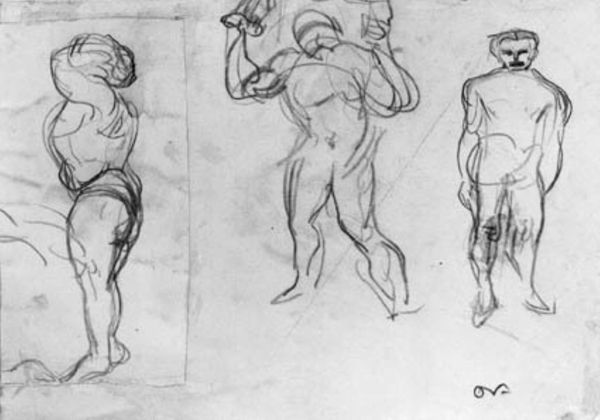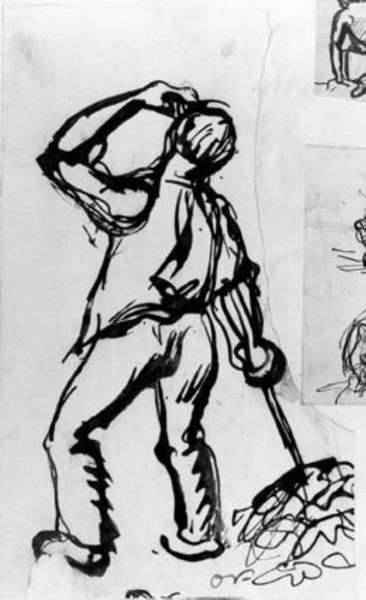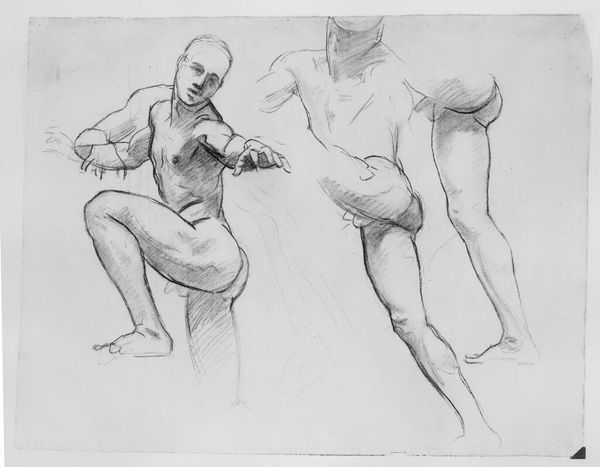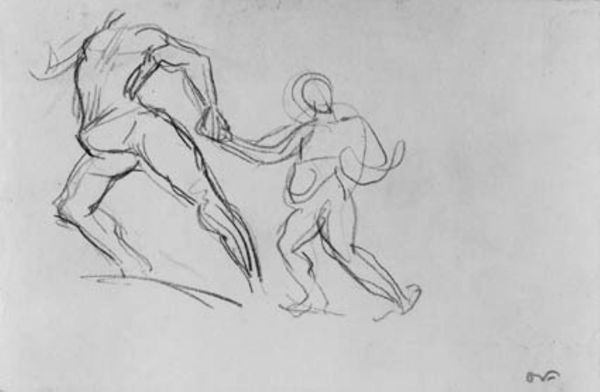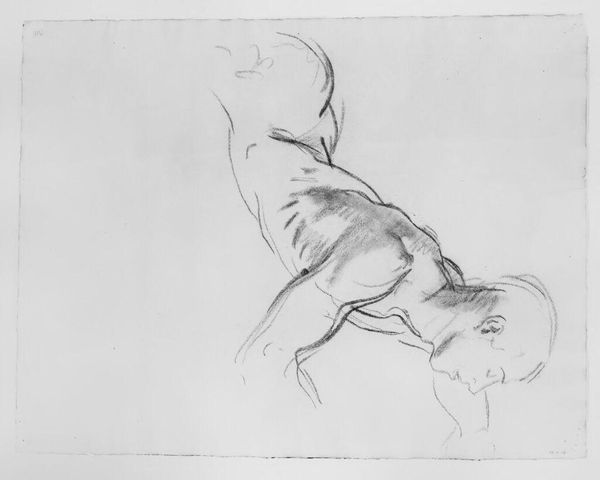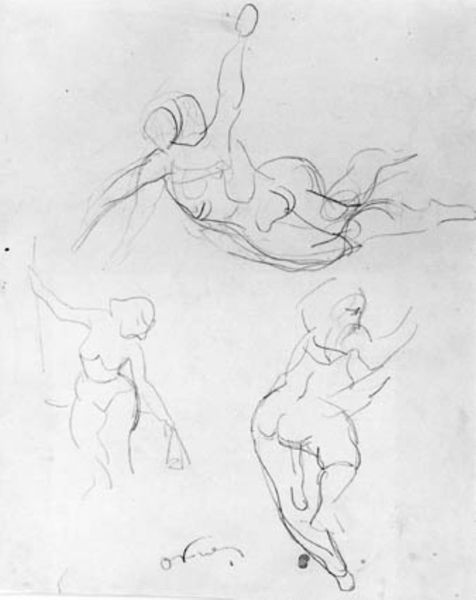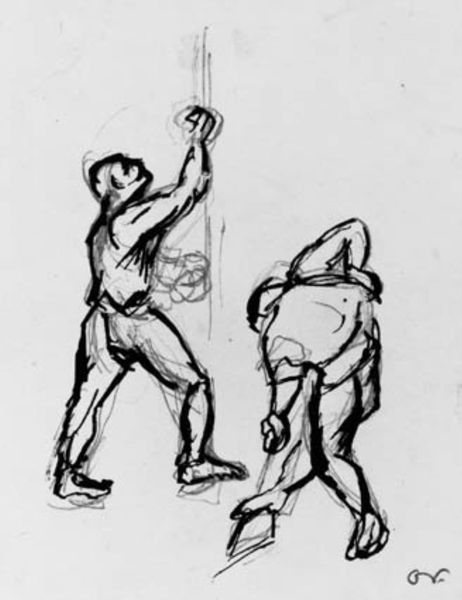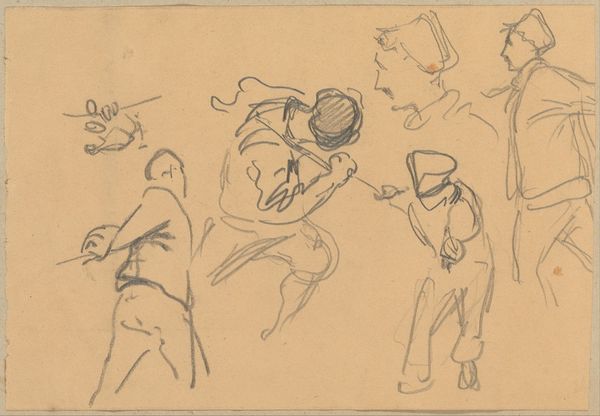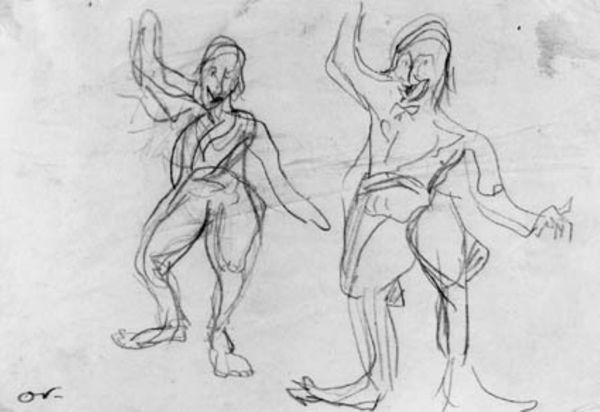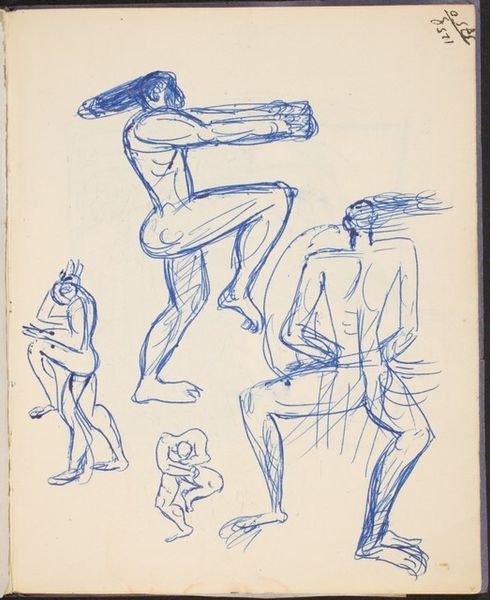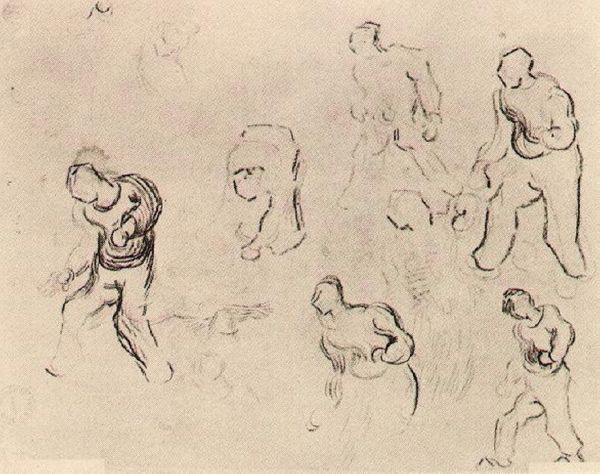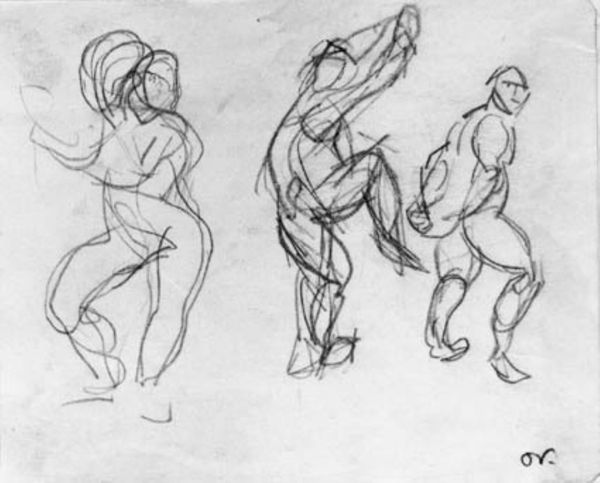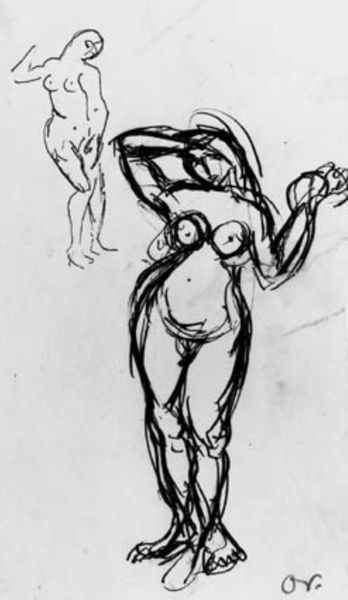
Dimensions: 151 mm (height) x 232 mm (width) (bladmaal)
Curator: Looking at this image, the dynamism is the first thing that strikes me. Editor: Agreed! I can almost feel the energy radiating off of "Three Studies of Figures in Motion" by Othon Friesz. I believe it was made between 1906 and 1909. It seems to be a pencil drawing, perhaps a preparatory sketch. Curator: Yes, and from a historical standpoint, these types of studies were crucial for artists, particularly those working within academic traditions or exploring history painting. They are currently housed at the SMK, Statens Museum for Kunst. It looks like it allowed Friesz to explore various poses, musculature, and the challenges of depicting figures engaged in action, even something ordinary like fleeing or reaching out. Editor: The sketchiness of the pencil adds to the feeling of immediacy and the sense of capturing fleeting movement. It highlights, for me, the material process behind image-making. What paper did he use, how was it prepared? I wonder about the rapid strokes he made, what was the rhythm? What are the economics of art production that dictate these quick pencil drawings instead of paintings? Curator: Interesting points. He seems to be grappling with anatomical precision within an impressionistic framework, you know? These figures also fit neatly into early 20th century anxieties. There is an emphasis on capturing motion, and also maybe an association with a renewed focus on classical ideas of athleticism that were so much in the news back then. Editor: True, though these rough sketches have this utilitarian, work-like aura of production. In comparison to a finished work, a sketch exposes the raw process, the manual labor of representing bodies—even in art about supposedly higher historical topics. Curator: So, instead of an artistic moment, for you, it reflects the means of making, the infrastructure behind this representation. Editor: Precisely! We are considering the value, not just of the image, but also of labor and its traces. What is left for us is this raw image from a crucial transitional period in art. Curator: Yes! The pencil itself acting as a conduit between vision and historical expression, a tangible medium for Friesz to investigate form and its meanings at that time.
Comments
No comments
Be the first to comment and join the conversation on the ultimate creative platform.
